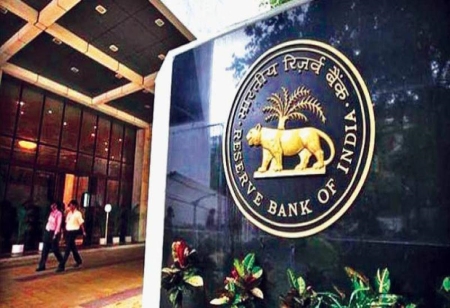
RBI's New Digital Rupee To Expand Into More Metropolitan Cities

 On December 1, 2022, the retail digital rupee trial was started in Mumbai, New Delhi, Bengaluru, and Bhubaneswar, as predicted. The retail digital rupee experiment began in a limited user group with four large lenders participating, including State Bank of India, ICICI Bank, Yes Bank, and IDFC First Bank. Later, Ahmedabad, Gangtok, Guwahati, Hyderabad, Indore, Kochi, Lucknow, Patna, and Shimla will be included. The pilot's scope may be gradually expanded to cover more banks, users, and locations as needed.
On December 1, 2022, the retail digital rupee trial was started in Mumbai, New Delhi, Bengaluru, and Bhubaneswar, as predicted. The retail digital rupee experiment began in a limited user group with four large lenders participating, including State Bank of India, ICICI Bank, Yes Bank, and IDFC First Bank. Later, Ahmedabad, Gangtok, Guwahati, Hyderabad, Indore, Kochi, Lucknow, Patna, and Shimla will be included. The pilot's scope may be gradually expanded to cover more banks, users, and locations as needed.
What exactly is the Digital Rupee? According to the concept note, the Reserve Bank of India's official form of money is the Central Bank Digital money (CBDC). The RBI's CBDC, also known as the Digital Rupee or e-Rupee, is convertible one-to-one with fiat money and is the same as a sovereign currency, according to the regulator.
According to the central bank digital currency (CBDC) tracker, around 105 nations, accounting for 95% of global GDP, have taken measures to include digital currency into their ecosystem.50 nations are in the advanced stages of exploring the possibility of launching digital money, while 10 countries have already done so.
Kishore Subramanian, the founder of Shree Consultants, says that the distinction between digital currency and UPI is that digital currency is like actual cash issued by the central bank and is the RBI's obligation, whereas UPI is a payment method. Any UPI transaction is the responsibility of the respective bank.
The e-Rupee would be a digital token that serves as legal tender. It would be released in the same denominations that paper money and coins are now. It would be dispersed via middlemen, such as banks. Users will be able to transact using eRs-R via a digital wallet provided by partner banks and saved on their mobile phones. Person to Person (P2P) and Person to Merchant (P2M) transactions are both possible. (P2M). QR codes shown at merchant locations can be used to make payments to retailers.
In his welcoming address, Hemant Jain, vice president of the PHDCCI, emphasised that the Central Bank's digital currency is founded on the principles of trust, safety, liquidity, and integrity. He stated that the transition to digital currency will close loopholes and finally eliminate all black money in the system. This would also assist the CBDC in removing Rs 4,984.80 crore in physical currency security printing expenses incurred by the general population, enterprises, banks, and the RBI.
To summarize, the digital rupee is not a cryptocurrency and is most likely the furthest distant from one. The digital rupee is just actual money that has been converted to digital currency. This will not only improve our everyday lives, but it will also move our country and economy forward in the following decade.